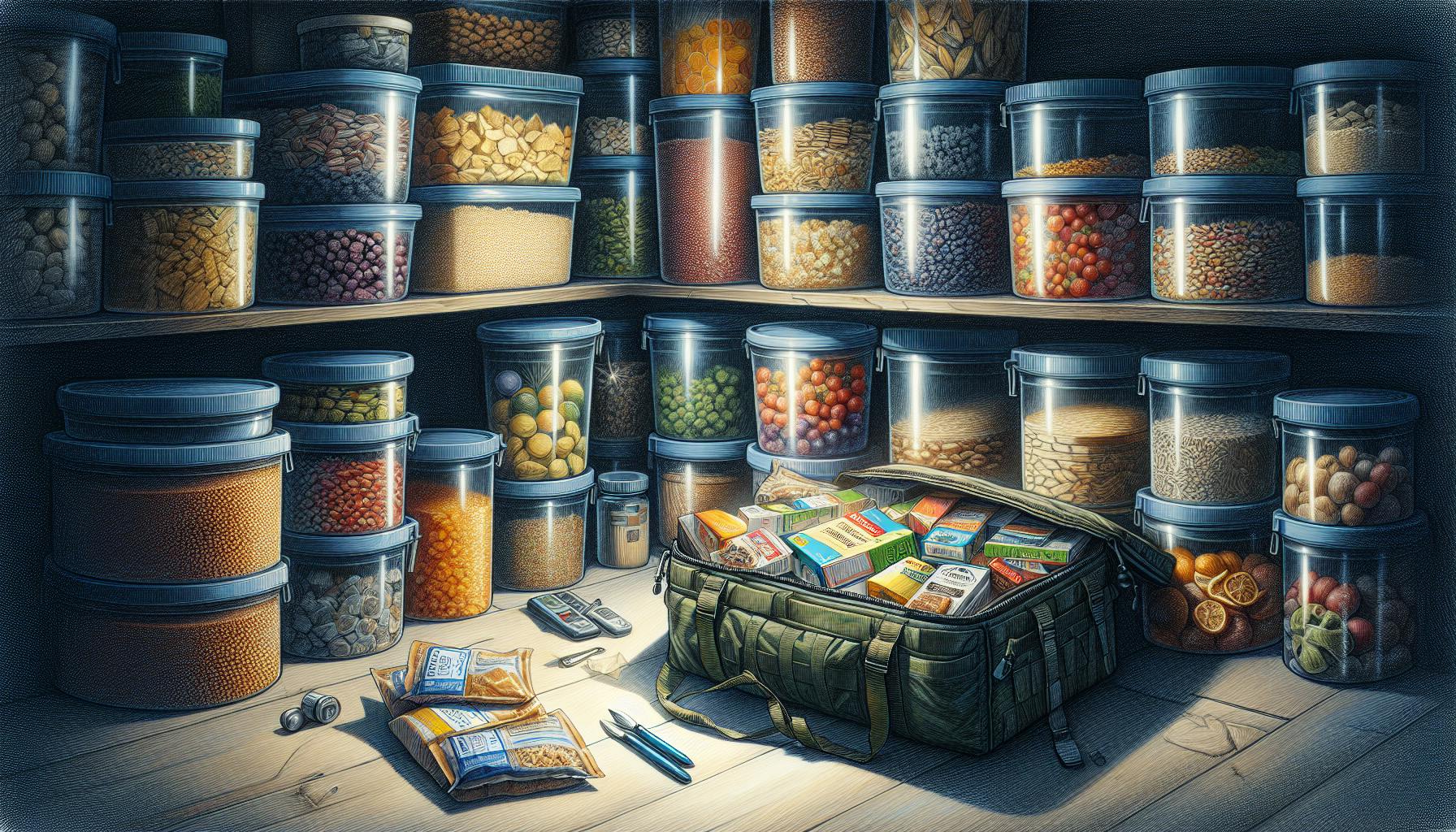When venturing into nature, having the right survival tools can mean the difference between life and death. Most outdoor enthusiasts would agree that a well-equipped survival belt is an essential item to carry.
The good news is, with some guidance, beginners can easily set up their own customized survival belt kit. In this post, you'll learn a step-by-step process to assemble a belt with all the critical emergency gear you need.
You'll discover how to identify the best belt base and buckle features. We'll cover what small first aid supplies, useful tools, and navigation devices to include. And you'll see how to integrate innovative products like the Wazoo survival belt into your personal setup. By the end, you'll have the ultimate beginner survival belt that could save your life out there.
Introduction to Survival Belts for Beginners
A survival belt is an essential all-in-one toolkit designed to equip beginners with critical tools and items needed in emergency situations. Unlike a traditional belt, survival belts feature pockets, compartments, and attachments to consolidate several preparedness essentials into one portable kit.
The key benefits of survival belts, especially for those new to emergency preparedness, include:
Defining the Survival Belt
A survival belt is a specially designed belt with pockets, pouches, and attachments to hold various survival tools and gear. It serves as a convenient way to keep necessary equipment organized and within reach. Key features include:
- Multiple compartments and pockets to store small tools, first aid supplies, fire starters, signaling devices, and more
- Durable, water-resistant materials and secure closures to protect contents
- Lightweight and low-profile so it can be worn comfortably for extended periods
- Modular attachments like carabiners, straps, and Molle panels to customize storage
- Quick access to life-saving equipment when every second counts
Survival belts enable beginners to consolidate the essentials into their everyday carry for enhanced preparedness.
Key Reasons to Have a Survival Belt
There are several compelling reasons why survival belts are critical items for beginners:
-
Consolidation of key tools: Survival belts allow users to keep tools, devices, and supplies consolidated in one place instead of scattered across multiple bags or kits. This makes critical items easier to access.
-
Portability: Worn on the waist, survival belts are highly portable. The lightweight design ensures that users can travel freely with the resources they need.
-
Ease of access: With compartments and pockets properly organized, users can swiftly grab the exact item they need in an emergency rather than rummaging through a backpack.
-
Expanded everyday carry: The modular attachments on many survival belts enable users to customize the storage space available and expand their EDC inventory.
For those getting started with emergency preparedness, a thoughtfully packed survival belt is an excellent way to ensure they have versatile tools within arm's reach at all times. The consolidation and accessibility offered by survival belts make them a staple for beginners creating their first go-bags and SHTF kits.
Identifying the Best Survival Belt for Your Needs
When selecting a survival belt as a beginner prepper, there are a few key factors to consider so you get the right belt to meet your needs.
Belt Types and Materials
The most common materials for survival belts are:
- Nylon - Affordable and durable. Withstands moisture and daily wear and tear. Great for general purpose use.
- Leather - Stylish and long-lasting if properly cared for. Not as moisture-resistant as nylon.
- Tactical - Made of rugged, heavyweight nylon. Holds more weight and tools. Ideal for harsh conditions.
A versatile nylon or leather belt may be the best choice when starting out. Tactical belts tend to be overbuilt for everyday carry.
Sizing and Fit
- Measure your waistline where you typically wear your pants.
- Add 2 inches to allow room for belt loops and buckling.
- Try the belt on with pants to ensure a good fit that is snug but not too tight.
- Consider adjustable sliding buckles to customize and ensure comfort.
An improperly sized belt will be uncomfortable and potentially unsafe if carrying additional weight or tools.
Key Features to Look For in a Survival Belt Buckle
The buckle is the foundation of any good survival belt. Prioritize buckles that:
- Integrate multiple tools like knives, fire starters, whistles.
- Use heavy-duty materials such as steel or titanium.
- Allow for easy accessibility and secure locking.
- Include a bottle opener, as this can be useful in various situations.
The more tools and capabilities built right into your buckle, the more prepared you'll be to handle anything while keeping your hands free. Durability is also key for longevity.
When researching options, strike a balance between usefulness, durability, and budget to find the best survival belt for your personal needs and skill level. Proper fit and wearing it frequently helps ensure you can rely on it when needed most.
Assembling Your Survival Belt Kit
A well-stocked survival belt kit is an essential part of any prepper's gear. Having quick access to critical supplies on your belt can make all the difference in an emergency situation. Here are some of the top items every survival belt kit should contain.
Small First Aid Supplies
A basic first aid kit is vital to have on your belt at all times. Some essentials include:
- Adhesive bandages
- Antibiotic ointment
- Anti-diarrheal medication
- Pain relief medicine like ibuprofen
- Gauze and medical tape
- Small scissors and tweezers
Packing these basic medical supplies in a compact belt pouch ensures you can quickly treat minor injuries and ailments while on the go.
Useful Tools
In addition to medical items, a few key tools can go a long way when carried on your survival belt:
- Survival belt with integrated tools like a knife, flashlight, fire starter, and whistle
- Waterproof matches and tinder
- Signaling mirror
- Nylon cordage
- Mini multi-tool
Choosing compact but versatile tools allows preppers to perform essential tasks like building shelters, starting fires, attracting help, and more with items right on their belt.
Navigation and Signaling Devices
Having ways to navigate your surroundings and signal for assistance is vital for survival scenarios. Important devices to keep on your belt include:
- Button compass
- Emergency strobe light or flare
- GPS locator beacon
- Weather radio scanner
- Signaling whistle
With these compact but critical navigation and signaling tools on your belt, you have what you need to monitor conditions, navigate changing environments, and call for help when needed - no matter where you are.
Assembling a survival belt kit with these types of small but indispensable supplies ensures every prepper has rapid access to items that can truly save lives in emergencies. Customizing your essential medical equipment, versatile tools, and signaling devices prepares you for the unexpected.
sbb-itb-b932644
Customizing Your Survival Belt with the Wazoo Survival Gear
Adding pouches and gear to your survival belt allows you to customize it to your specific needs. The Wazoo Survival Belt provides a versatile MOLLE attachment system to integrate additional components.
Integrating Wazoo Survival Belt Features
The Wazoo Survival Belt comes equipped with several built-in features to aid survival preparedness:
- Firestarter flint and scraper for igniting fires
- Emergency whistle to signal for help
- Compass for navigation
- Paracord for setting traps and building shelters
Take time to practice using these features to become proficient in emergency situations.
Choosing Additional Pouches and Gear
The Wazoo Belt's MOLLE system allows attachment of additional MOLLE-compatible pouches. Useful additions include:
- First aid kit containing bandages, ointments, medicines
- Knife sheath to safely carry a survival knife
- Water bottle pouch for hydration during long treks
- Food pouch to carry high-protein snacks like beef jerky
Choose pouches to meet your specific needs - whether hiking outdoors or facing urban disasters.
Tailoring to Your Situation
Customize your survival belt based on risks you may face:
- Natural disasters: Focus on water, food, first aid, fire starters
- Hiking/camping: Add navigation tools like map pouches
- Urban emergencies: Include self-defense items like pepper spray
Continually evaluate and adjust belt contents as your situation changes. The right preparation can prove invaluable.
Maintaining Your Survival Belt
Proper maintenance of your survival belt is critical to ensure it functions properly when you need it most. Here are some key tips:
Inspection and Replacement
- Inspect your survival belt and contents at least every 6 months. Check for any signs of wear, tear or corrosion.
- Replace any expired items like food, water or medicine. Check expiration dates on things like fire starters, flashlights and batteries.
- Test each item to confirm it still functions properly. Replace any damaged or worn items.
Proper Storage and Cleaning
- Store your survival belt in a cool, dry place away from extreme temperatures or moisture. Consider using a waterproof case.
- Periodically clean the belt with a damp cloth to remove dirt, debris and corrosion. Avoid submerging the belt in water when possible.
- Use a corrosion inhibitor like Boeshield T-9 to protect metal parts from rust and corrosion. Reapply as needed.
Following these basic maintenance practices will keep your survival belt in good working order. Periodically inspecting, testing and replacing damaged or expired items as needed will ensure it performs properly in an emergency situation. Proper storage and cleaning prevents unnecessary wear and tear over time. Investing a little periodic effort into survival belt maintenance goes a long way when you need it most.
Conclusion: The Ultimate Survival Belt Setup for Beginners
A survival belt is an essential item for beginners focused on emergency preparedness. By following the recommendations in this article for selection, setup, and maintenance, you can create the ultimate survival belt to meet your needs.
Here are some key takeaways:
-
Choose a belt with plenty of storage space and attachments to hold the necessary tools and supplies. Prioritize durability and versatility.
-
Stock your belt with basic survival items like a knife, flashlight, fire starter, compass, first aid supplies, cordage, signaling device, multi-tool, and portable water filter or purification tablets.
-
Arrange gear efficiently for quick access and even weight distribution. Consider comfort for extended wear.
-
Inspect equipment routinely and replace expired items. Test gear under various conditions.
-
Continue expanding your knowledge, skills and supplies over time. Customize as needed for different environments or situations.
Having the right survival belt prepares you to handle emergencies and uncertainties. Follow these recommendations to equip yourself with this vital item. Start simple, focus on fundamentals, and build up your capabilities. With practice, you'll gain confidence to act decisively when it matters most.


